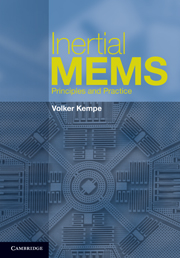5 - First-level packaging
Published online by Cambridge University Press: 03 May 2011
Summary
First-level packaging (FLP) of MEMS is a decisive step within the fabrication chain of the final product. During FLP the MEMS die(s) is (are) integrated into a package that has to protect the MEMS structure, including the signal-processing elements. The package has to create an electrical interface to the higher-level components and a well-controlled coupling of the physical measurand or the manipulated variable to the sensor or actuator. The FLP process includes all assembly steps between wafer finishing and final encapsulation such as dicing, die separation, die attach, interconnection between dies (if any), connection to the outside connectors, and encapsulation.
FLP of MEMS uses many techniques developed for IC packaging within the microelectronics industry [Tummala et al. 1993]. Ceramic, metallic, and plastic packages have been adapted for FLP of MEMS. However, many MEMS devices, in particular those with optical, chemical or mechanical access channels to the outside world, require specialized solutions, which often are manufactured using dedicated packaging lines. Nevertheless, the infrastructure of the IC-packaging industry is an important basis for a cost-efficient packaging especially of types of MEMS devices for which no mechanical contact to the environment is required, as is the case for some field measurements (e.g. magnetic, temperature, and inertial field measurements). Leading packaging companies such as ASE (Korea), Amkor, Carsem, and Kyocera have extended their portfolios, often in close cooperation with the final producer, towards such solutions.
- Type
- Chapter
- Information
- Inertial MEMSPrinciples and Practice, pp. 205 - 226Publisher: Cambridge University PressPrint publication year: 2011
- 1
- Cited by



